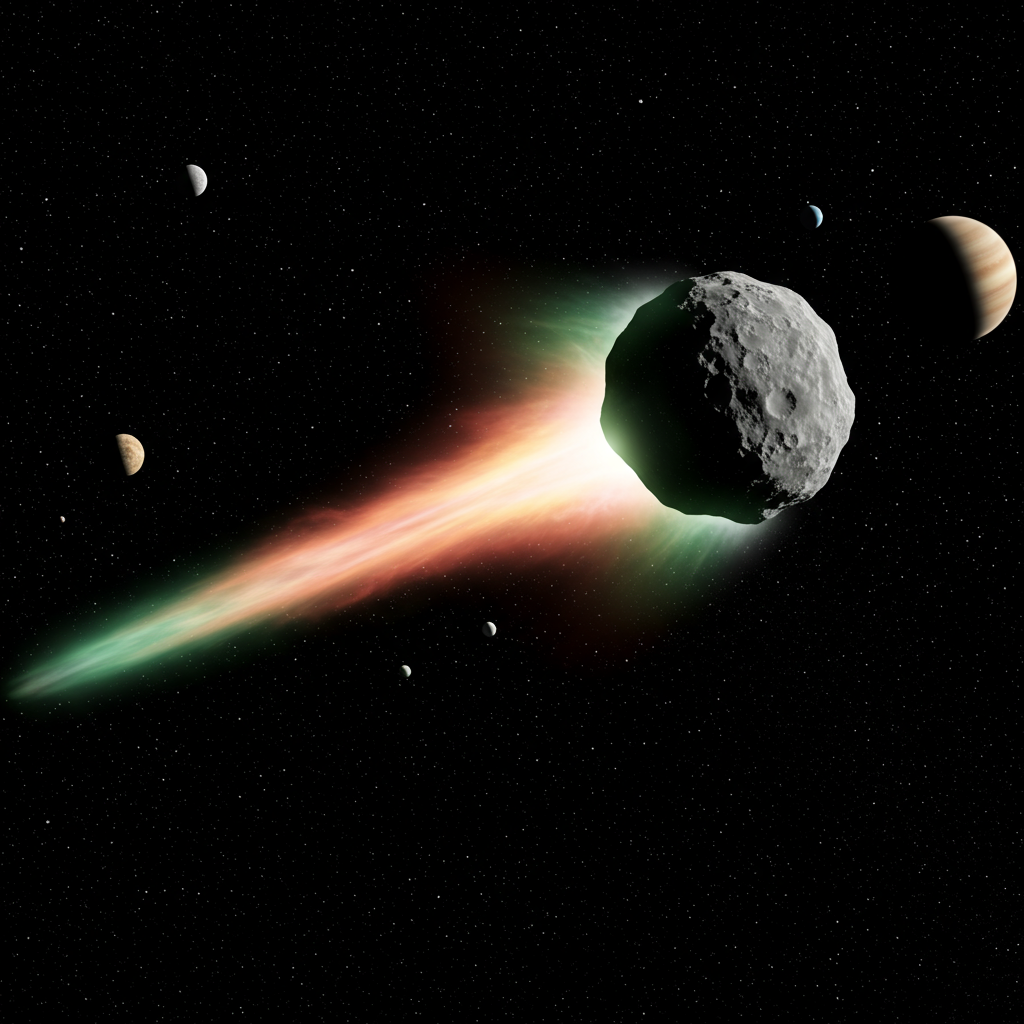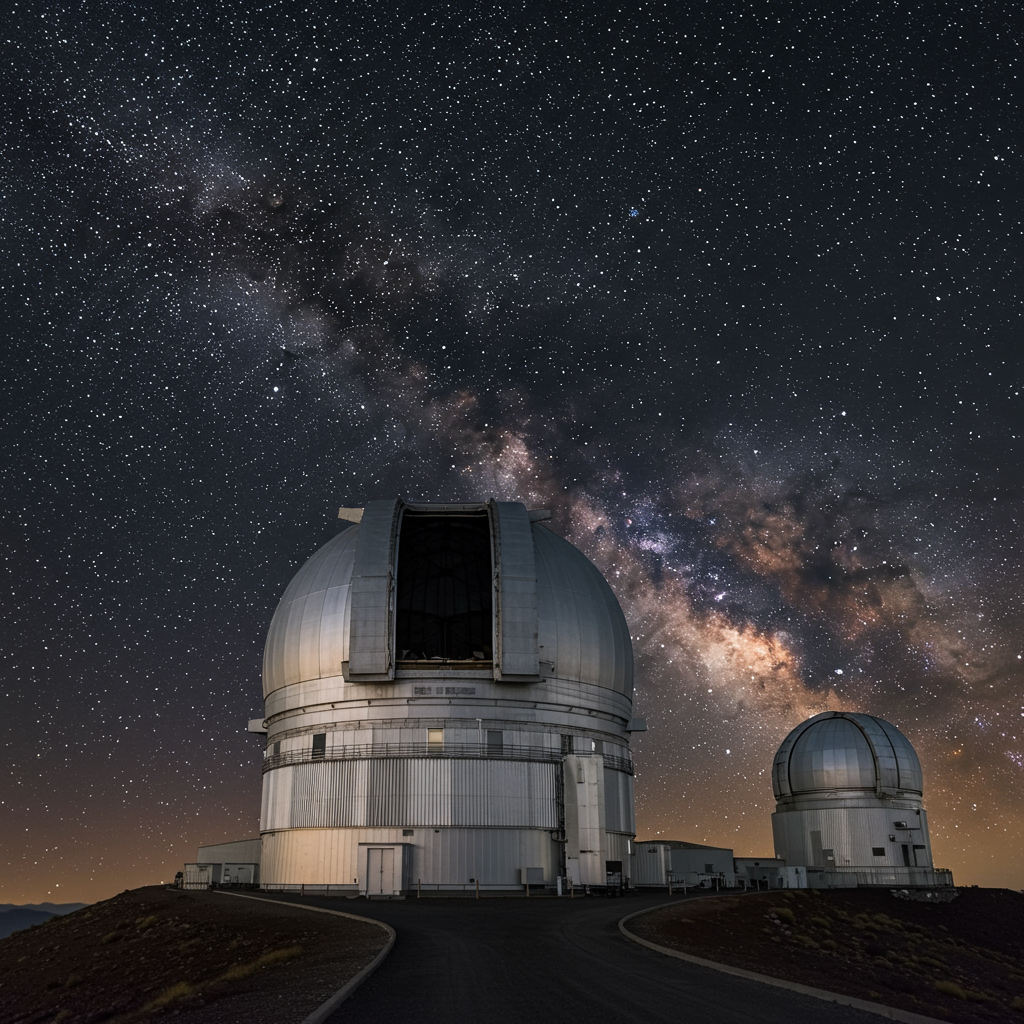A thrilling astronomical discovery is unfolding right in our cosmic backyard. Scientists have confirmed the presence of a rare “interstellar object” rapidly traversing our solar system. This marks only the third instance in history that such a visitor from outside our star system has been confidently detected making its way through the inner region where Earth resides. The object, now identified as a comet, offers a unique opportunity to study material from distant worlds.
A Third Confirmed Interstellar Visitor
For centuries, astronomers have theorized that objects from other star systems might occasionally pass through our own. Until very recently, detecting such transient visitors was incredibly challenging. This latest discovery, formally designated 3I/atlas, provides crucial evidence that these interstellar travelers are indeed real, even if rare occurrences within our observable reach. Its detection follows just two previous confirmations, highlighting the significant technological advancements in sky surveys.
The Discovery: How 3I/ATLAS Was Found
The initial signs of this cosmic interloper emerged from data collected by the Asteroid Terrestrial-impact Last Alert System, or ATLAS. This network of telescopes, partly funded by NASA, is specifically designed to scan the sky for potentially hazardous objects. The ATLAS facility in Rio Hurtado, Chile, first flagged unusual activity in data gathered between late June. This initial finding prompted follow-up observations.
Subsequently, NASA’s Center for Near Earth Object Studies and the International Astronomical Union’s Minor Planet Center officially confirmed the discovery on July 1st. Within days, further analysis clarified the object’s nature and origin. Numerous telescopes worldwide contributed additional data points, validating the ATLAS findings and providing a clearer picture of the object’s path. Observations from several ATLAS telescopes and the Zwicky Transient Facility at the Palomar Observatory in California proved particularly valuable, offering data stretching back to mid-June that supported the comet’s existence.
Confirming Its Extraterrestrial Origin
The definitive evidence for 3I/ATLAS’s interstellar origin lies in its speed and trajectory. Objects gravitationally bound to our sun travel along elliptical paths, meaning they will eventually return towards the sun after swinging away. However, 3I/ATLAS is moving at an exceptionally high velocity – estimated around 152,000 mph (approximately 245,000 km/h). This speed is far greater than what’s needed to escape the sun’s gravitational pull once it leaves our solar system.
Furthermore, its path through the solar system is described as very nearly a straight line, or more technically, a hyperbolic trajectory. As Dr. Paul Chodas, director of NASA’s Center of Near-Earth Object Studies, explained, tracing the object’s movement backward in time confirms it did not originate within our solar system’s gravitational influence. Instead, it arrived from interstellar space, specifically from the direction of the constellation Sagittarius, suggesting it has traveled for millions of years before encountering our solar system.
What We Know About Comet 3I/ATLAS
Initial observations have allowed astronomers to gather key details about this unique visitor. It’s been officially dubbed “A11pl3Z” or “3I/ATLAS,” with the “3I” signifying that it is the third confirmed interstellar (I) object found. Based on characteristics like a marginal coma (a hazy envelope of gas and dust) and a short tail, it has been confirmed to be a comet.
Size, Speed, and Trajectory
Estimates regarding the size of 3I/ATLAS vary slightly, but astrophysicist Josep Trigo-Rodriguez from Spain’s Institute of Space Sciences suggests it spans approximately 25 miles (around 40 kilometers). Other early estimates proposed a size up to 12 miles (20 km). While the icy nucleus of a comet is typically smaller, the estimations likely refer to the overall size including its activity. It is currently speeding towards the inner solar system, approaching from the direction of the Milky Way’s galactic bar.
As of the initial reports, the comet was roughly 420 million miles (about 670 million kilometers) from Earth, located near Jupiter’s orbit. Its projected path shows it will pass relatively close to Mars around October 3rd. The comet is expected to make its closest approach to the sun (perihelion) around October 30th. At that point, it will be about 130 million miles (210 million kilometers) away, just inside the orbit of Mars.
Is There Any Threat to Earth?
Understandably, the public often wonders about potential impacts when a new object is discovered in the solar system. Astronomers have provided clear assurance: 3I/ATLAS poses absolutely no threat to Earth. Its trajectory keeps it at a safe distance from our planet.
The closest it is expected to come to Earth will be around 150 million miles (240 million kilometers). This distance is substantial and ensures no risk of impact. For context, the closest recorded comet passage to Earth was Lexell’s Comet in 1770, which came within about 1.4 million miles – a mere fraction of the distance 3I/ATLAS will maintain. Earth will also be on the opposite side of the sun during the comet’s closest solar approach in October, further ensuring our safety.
A Rare Glimpse: Comparing 3I/ATLAS to Past Visitors
The detection of 3I/ATLAS is made even more significant because it joins an exclusive club. Before 2017, no confirmed interstellar objects had ever been observed passing through our solar system.
‘Oumuamua (2017)
The first such object detected was ‘Oumuamua in 2017. Named after the Hawaiian word for “scout,” this object was unique for its highly elongated, cigar-like shape and unusual tumbling motion. Its nature sparked considerable scientific debate, including speculative hypotheses about artificial origins, though the consensus favors a natural explanation. ‘Oumuamua was not confirmed to have cometary activity.
2I/Borisov (2019)
The second interstellar visitor, 2I/Borisov, was discovered in 2019. Unlike ‘Oumuamua, Borisov clearly exhibited characteristics of a comet, displaying a noticeable coma and tail as it warmed near the sun. Its cometary nature provided astronomers with familiar material to study, although its origins remained external to our solar system. 3I/ATLAS appears to be more similar in type to 2I/Borisov.
Why Studying Interstellar Objects Matters
While seemingly just distant space rocks, interstellar objects like 3I/ATLAS are incredibly valuable to science. They are essentially samples ejected from other planetary systems. Studying their composition, size, shape, and behavior provides astronomers with direct insights into materials from faraway stars.
Insights into Planetary Formation Elsewhere
Astronomers believe these objects are “building blocks” of planets that were formed in other solar systems and later kicked out into the vastness of interstellar space. By analyzing the dust and gases released by 3I/ATLAS, scientists can compare them to comets and asteroids from our own solar system. This comparison helps researchers understand whether the materials and processes involved in planet formation around other stars are similar to those that created our Earth and its neighbors. This is crucial for gaining a broader understanding of exoplanets – planets orbiting other stars – and the prevalence of different types of worlds throughout the galaxy.
Future Observation Plans
Astronomers plan to continue observing 3I/ATLAS actively in the coming weeks and months. They aim to refine estimates of its size, study its physical properties, and gather more data on its composition. Ground-based telescopes are expected to be able to observe the comet through September.
However, as it approaches the sun, it will pass too close to our star to be safely visible from Earth-based telescopes. It is expected to reappear on the other side of the sun in early December, allowing for renewed studies. Scientists are exploring various observation methods. Current capabilities for tracking such objects are significantly improved compared to when ‘Oumuamua was observed. The upcoming Vera C. Rubin Observatory, designed for wide-field scanning, is mentioned as a powerful tool for tracking moving objects once fully operational. There’s even a proposal to potentially use NASA’s Mars rovers to capture images during the comet’s relatively close pass by the Red Planet in October. While speculative ideas exist, such as using the James Webb Space Telescope to look for non-gravitational acceleration (suggested in the context of previous debates about ‘Oumuamua), the primary focus remains on standard characterization of this natural visitor.
Frequently Asked Questions
What is 3I/ATLAS and why is it called an “interstellar object”?
3I/ATLAS is a newly discovered comet that has been confirmed to originate from outside our solar system. It’s called an “interstellar object” because its extremely high speed (around 152,000 mph) and straight-line trajectory through our solar system prove it is not gravitationally bound to our sun. It arrived from the direction of the constellation Sagittarius, having likely traveled through interstellar space for millions of years before entering our cosmic neighborhood.
Is 3I/ATLAS a threat to Earth, and when is its closest approach?
No, 3I/ATLAS poses no threat to Earth. Astronomers have confirmed that its trajectory keeps it at a safe distance. At its closest, it is expected to remain about 150 million miles (240 million kilometers) away from Earth. Its closest approach to the sun is predicted for October 30th, when it will be approximately 130 million miles (210 million kilometers) from our star, just inside the orbit of Mars.
Where can astronomers observe 3I/ATLAS in the future?
Astronomers are currently observing 3I/ATLAS using various telescopes worldwide, including the ATLAS network and the Zwicky Transient Facility. Ground-based observations are expected to continue through September. After passing too close to the sun for visibility from September through November, the comet is anticipated to reappear and become observable again from early December. Future observations may utilize advanced facilities like the forthcoming Vera C. Rubin Observatory and potentially even NASA’s Mars rovers during its Mars flyby.
Conclusion
The detection of 3I/ATLAS represents a remarkable moment in astronomy. As only the third confirmed interstellar object ever observed passing through the inner solar system, it provides a unique opportunity to gather data on material from beyond our sun’s influence. Scientists will be actively studying this fast-moving comet in the coming months to learn more about its composition and size. While its exact origin remains unknown, the ability to study this visitor offers invaluable insights into the materials and processes that occur during planetary formation around other stars. The safe passage of 3I/ATLAS will allow researchers to focus entirely on the scientific bounty this rare encounter provides, contributing significantly to our understanding of the wider cosmos.




